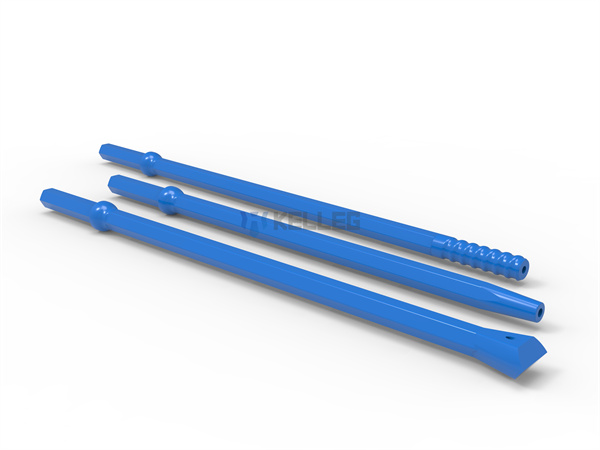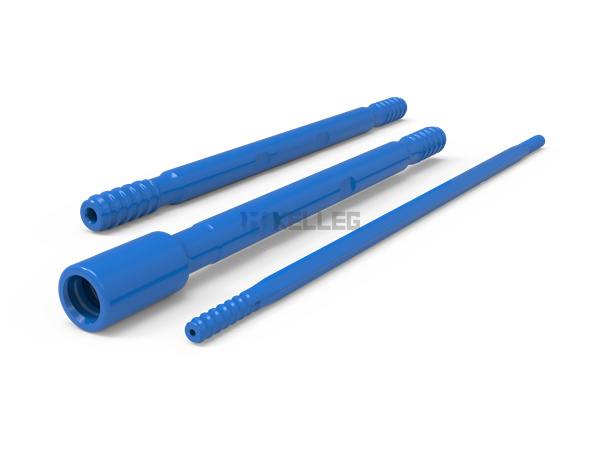2020 官网升级中!现在您访问官网的浏览器设备分辨率宽度低于1280px请使用高分辨率宽度访问。
In various engineering operations, the drill rod is one of the vital tools, and its performance and status are directly related to work efficiency and operational safety. However, many users often neglect the maintenance of drill rods, resulting in a decrease in work efficiency and even safety accidents. Therefore, proper maintenance of the drill rod is crucial. This article will introduce the importance of drill rod maintenance and simple maintenance measures to improve work efficiency and safety.

The importance of drill rod maintenance
Reduce downtime: through regular maintenance of the drill rod, potential problems can be discovered and solved in time, thereby reducing downtime caused by drill rod failure. It will help maintain the continuity of work progress and improve work efficiency.
Improve work quality: a well-maintained drill rod can maintain its original performance and accuracy, improving work quality.
Ensure operational safety: safety issues such as breakage of drill rods are often related to lack of maintenance. Regular maintenance of the drill rod enables the timely detection and resolution of safety hazards, reducing the likelihood of accidents and ensuring the safety of operators.

Practical methods for maintaining drill rods
Regular inspection and cleaning
Regularly inspect the appearance and connection points of the drill rod to ensure there are no noticeable deformations, cracks, or looseness. At the same time, regularly clean the oil and impurities on the surface of the drill rod to keep it clean and dry to prevent rust and corrosion.
Lubrication and maintenance
Apply an appropriate amount of lubricating oil to the connecting parts and key friction points of the drill rod to reduce friction and wear and extend the service life of the drill rod. In addition, the lubricating oil should be replaced regularly according to the usage and working environment of the drill rod to ensure its lubrication effect.
Reasonable use and operation
When using the drill rod, adhere to the operating procedures to prevent damage caused by excessive force or improper operation. Select the appropriate specifications and types of drill rods based on operational requirements to ensure compatibility with the operating equipment and enhance work efficiency.
Timely replacement
If the drill rod is severely worn, deformed, or cracked, it should be promptly replaced to prevent safety accidents. Avoid using damaged drill rods to continue working.
Precautions for maintenance of drill rod
Follow manufacturer maintenance recommendations
Different brands and models of drill rods may have various maintenance requirements and recommendations. Users should read the product manual carefully and follow the manufacturer’s maintenance recommendations. It helps ensure proper use of the drill rod and prolongs its service life.
Use appropriate maintenance tools
During drill rod maintenance, it’s pivotal to use appropriate maintenance tools to prevent improper use that could damage the drill rod or result in poor maintenance outcomes.
Pay attention to the maintenance cycle
We should reasonably arrange the maintenance cycle according to the use of drill rods and the working environment. Typically, frequently used drill rods should have shorter maintenance cycles and more frequent maintenance. Drill rods used less frequently can appropriately extend the maintenance cycle. Additionally, in harsh working environments, it’s essential to strengthen the maintenance and inspection of the drill rod.
Conclusion
Drill rod maintenance is of great significance to improving work efficiency and safety. By implementing a range of maintenance measures, we can effectively preserve the drill rod, prolong its lifespan, and ensure the safety and stability of operations.
In future work, we should pay more attention to the maintenance of the drill rod and incorporate it into daily management and operation processes to ensure that the drill rod is always in good working condition. In this way, we can enhance work efficiency, mitigate safety risks, and safeguard both the company’s progress and the well-being of its employees.